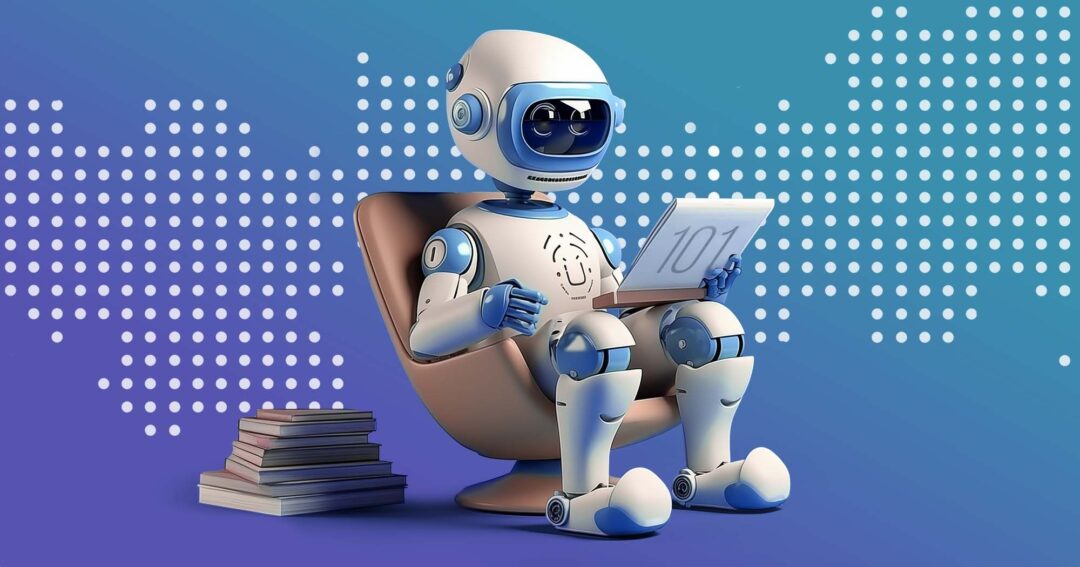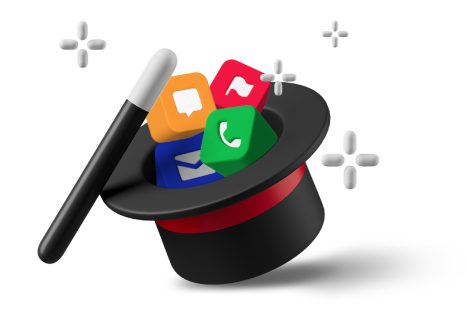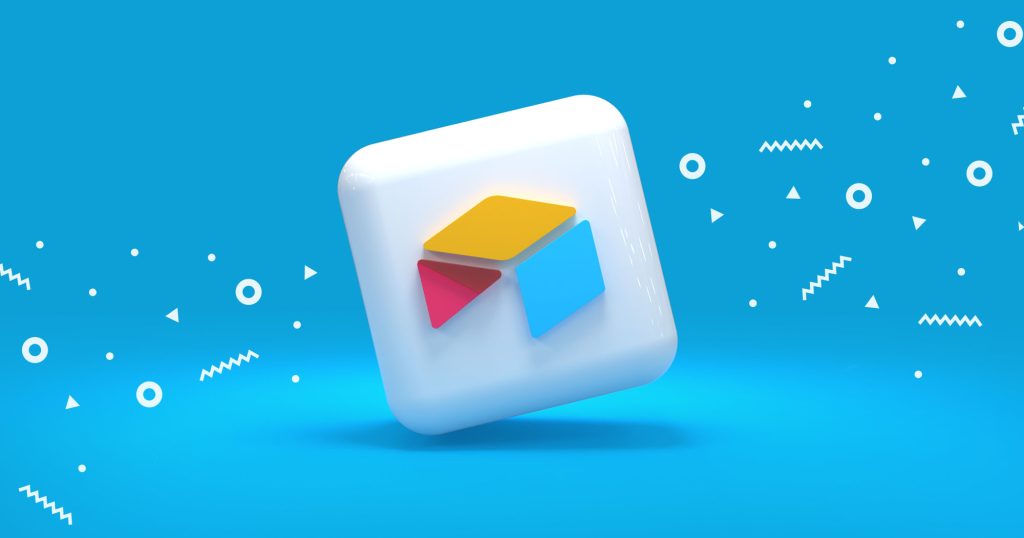Have you ever wondered what customer support and engagement will look like in the upcoming years? With the rise of AI-powered voice or chatbots, businesses already have a plethora of new opportunities. Today, we will stroll through the streets of the AI-powered digital ecosystem driven by the power of machine learning, algorithms, and data.
Yes, you got it right — we’re talking about AI chatbots.
AI Chatbots Explained
According to Gartner, by 2027, chatbots will become a first touch base for customers in multiple industries and organizations. The rapid adoption of AI chatbots is driven by their ability to automate repetitive tasks, provide 24/7 customer support, and deliver personalized recommendations.
As AI and natural language processing (NLP) advancements continue, chatbots are becoming increasingly human-like in their interactions. This is leading to more natural conversations that help build trust with customers.
From prompt replies to deep predictive analytics, AI is changing the customer experience and building a new, smarter one. Chatbots can handle routine queries and direct more complex issues to human agents. Their ability to engage customers in natural conversations helps businesses make interactions more personalized.
AI chatbots are more than just preinstalled, automated systems of the past. They can understand context, sentiment, and intent, allowing them to tailor responses to individual customers. This results in more meaningful engagement that drives customer satisfaction and loyalty. In today’s blog post, we’ll explore what AI chatbots are and how they change customer engagement.
The age of conversational AI chatbots is just around the corner — the future of witty banter with a tech-savvy twist. Gone are the days of robotic customer service interactions and scripted responses.
In fact, it was in 1966 when the ELIZA program designed by Joseph Weizenbaum fooled users into believing that they were holding a text-based conversation with real humans, not a machine. It was an early example of machines impersonating the real thing.
These virtual companions are not only engaging, but also efficient, cost-effective, and available 24/7. So say goodbye to the hold music and hello to a more personalized and intelligent interaction for business needs and further growth.
Why are they so crucial?
-
- Available at any time, 24/7: Chatbots can provide support and assistance at any time. They can address customer queries even outside your business hours.
- Productivity: Chatbots can handle a lot of customer queries simultaneously. They have a lightning-fast response time, which improves customer satisfaction.
- Staffing optimization: Chatbots can unburden human representatives from routine queries, leaving just the complex issues to humans
- Personalization: In the era of heightened customer expectations for a personalized service, chatbots are ideal for providing tailored solutions to each unique query.
- Cost-cutting potential: AI chatbots are a long way from replacing genuine human interactions, but already have huge potential for saving a good chunk of business costs.
Source: Litslink
How do chatbots work?
Chatbots are powered by artificial intelligence, which enables them to understand natural language and respond in a human-like manner. There are two primary types of chatbots: rule-based and AI-powered.
Rule-based bots work by following a predefined set of rules, and they can only provide prewritten responses. On the other hand, AI-powered chatbots are equipped with machine learning and NLP capabilities, which allow them to learn from conversation data to deliver more accurate and relevant responses.
The initial stage of developing an AI chatbot involves gathering data from multiple sources, including customer support logs and product manuals. This data is used to build the chatbot’s knowledge base, which contains all the necessary information about the business’s products and services. The AI chatbot is then trained to identify patterns in the way users ask questions and provide appropriate responses based on the context of the query.
NLP chatbots use a range of techniques to “understand” language, including semantic analysis, which identifies the meaning of words and their relationships to each other, and syntactic analysis, which focuses on the structure or grammar of the sentence. With these techniques, a chatbot can identify relevant information, such as names, dates, and locations, from a customer’s input and provide a timely, helpful response.
Machine learning is also becoming an increasingly important part of AI chatbots. With machine learning algorithms, chatbots can learn from previous interactions and improve their responses over time. The more data the chatbot has to learn from, the better it can perform, adapting to customer needs and preferences.
Moreover, the machine learning algorithms enable the chatbot to recognize context and context shifts. It can extract meaning from multiple queries, identify entity recognition, and accurately categorize different topics.
Once the chatbot is deployed, it continues to learn and improve through customer interactions. As the chatbot interacts with more customers, it becomes more proficient at understanding the queries and delivering more accurate responses.
AI chatbots can be customized to meet the specific needs of businesses, whether it’s answering customer inquiries, managing orders, or providing technical support. Chatbots can be integrated into various channels such as messaging applications, websites, social media platforms, and mobile applications. This enables businesses to provide 24/7 support across multiple channels, improving customer satisfaction and loyalty.
AI chatbot for business: Common use cases
AI isn’t just making waves in business oceans, it washes over all manner of B2C and B2B interactions. From getting into support to streamlining recruiting processes, AI chatbot integrations are exciting and vast. They are always at your service.
Here’s how to use an AI chatbot for your business.
Customer service AI chatbot
A customer service chatbot is designed to assist customers in resolving their queries related to the products and services offered by a business. According to a study, customers are increasingly utilizing chatbots for customer service inquiries by phone or email. AI chatbots can be accessed through a business’s website, app, or social media pages. They can provide quick responses and solutions to customer inquiries, freeing up human agents to deal with more complex issues.
An AI-powered customer service chatbot can greet customers, answer frequently asked questions and provide information about products or services, track orders, schedule appointments, and generate service tickets. Chatbots can also interact with customers in a personalized manner, using sentiment analysis to understand the customer’s mood and react accordingly. Businesses can use chatbots all the time, providing round-the-clock support to customers around the world.
AI assistant chatbot
AI chatbots can serve as virtual assistants to help employees in performing tasks such as scheduling appointments, responding to emails, and setting reminders. This helps automate repetitive tasks and allows employees to focus on more strategic activities. AI assistants can be integrated with a variety of business software, such as CRM systems, calendar apps, and collaboration tools. They can also use natural language processing to understand context, making communication with employees more efficient.
AI assistants can help automate tasks such as data entry, appointment scheduling, email management, and tracking tasks. This saves employees time and helps reduce errors caused by manual data entry. Additionally, AI assistants can provide employees with real-time updates on tasks and projects, enabling a fast and effective response to changing priorities.
Sales AI chatbot
AI chatbots can also significantly improve the sales process of a business, providing personalized interactions with potential customers. An AI-powered sales chatbot can collect and analyze customer data to provide customized sales pitches or to develop more accurate lead profiles. Additionally, AI chatbots can follow up with leads and engage them in personalized conversations, identifying their pain points and providing solutions.










